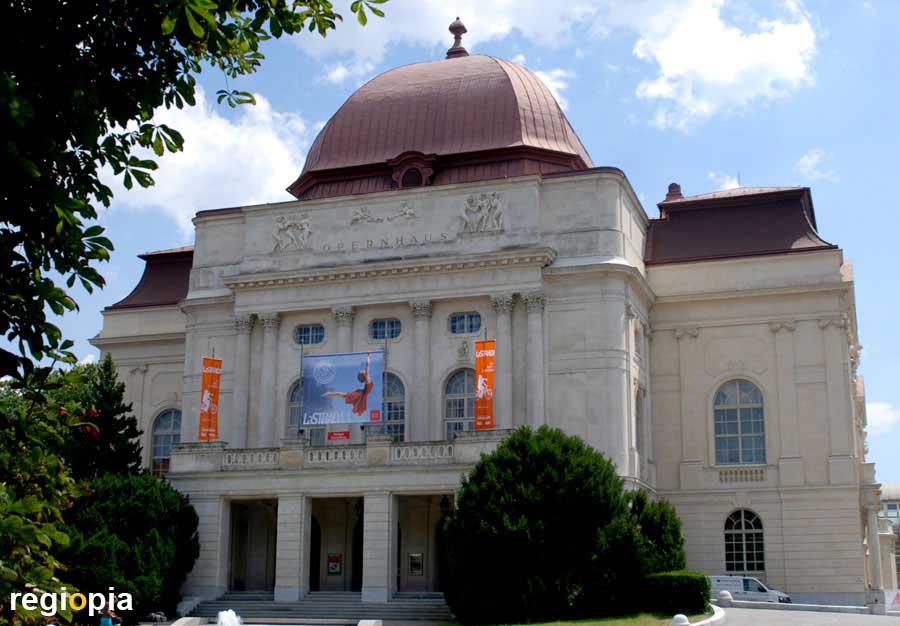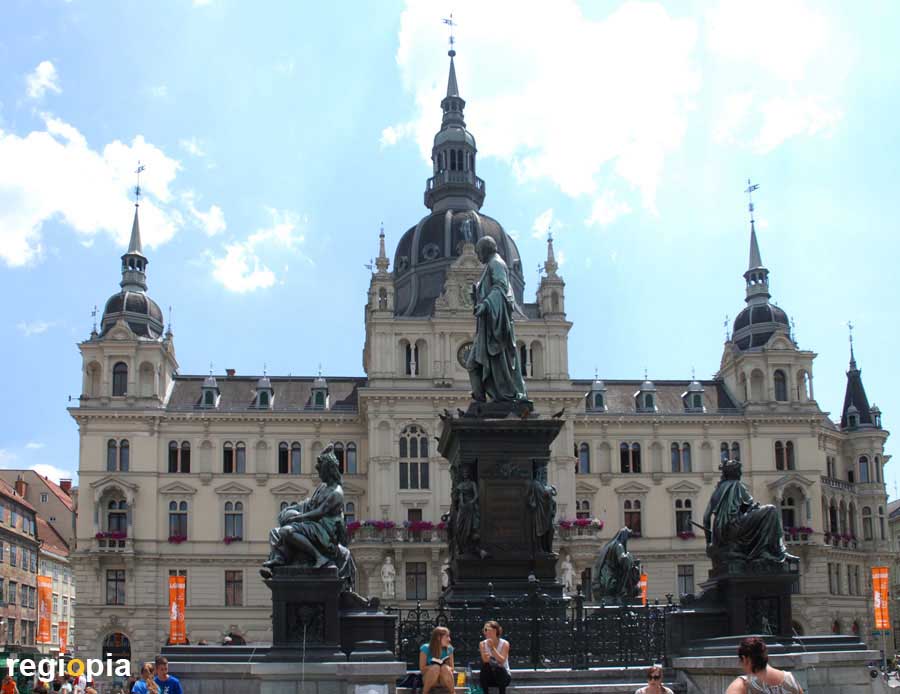
Graz city hall
The town hall is the most famous sight in the center of Graz. A town hall in the Renaissance style was built on this square as early as 1550. This town hall became too small in 1803 and had to give way to the neoclassical new building. The new town hall was designed by architect Christof Stadler and opened in 1807. When the town hall was expanded in 1893, the central part with a dome was added. This renovation was carried out by the architects Wielemans and Reuter. Since then it has been the most imposing building in the old town of Graz.
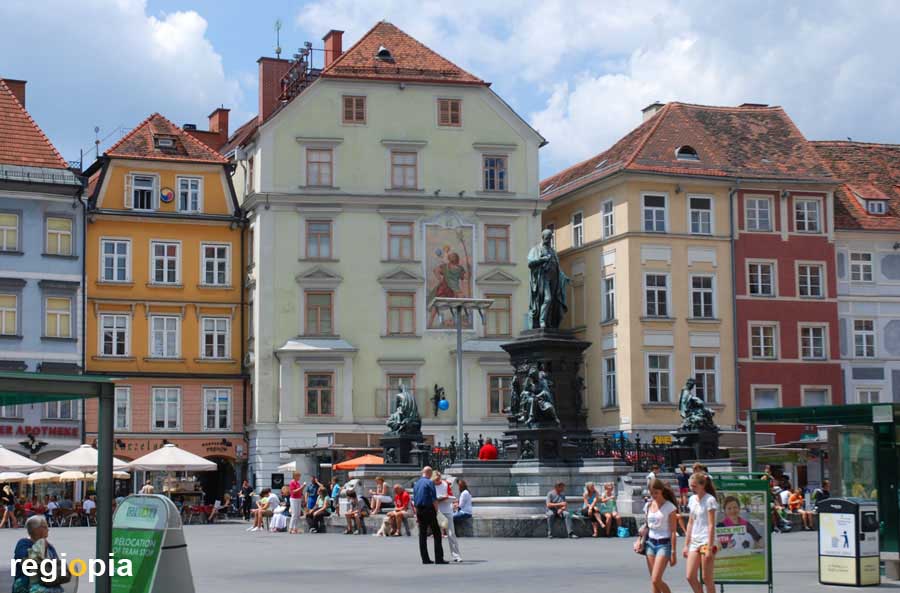
Hauptplatz
The "Hauptplatz" (main square) is the center of Graz. The square was created as market place in 1160. As the Town Hall was built the square became smaller. The fountain in the center of the square is named after Archduke Johann. The main square is also the hub of all the city's tram lines. Line 1 takes you from here to Eggenberg Palace or the Mariatrost pilgrimage church.
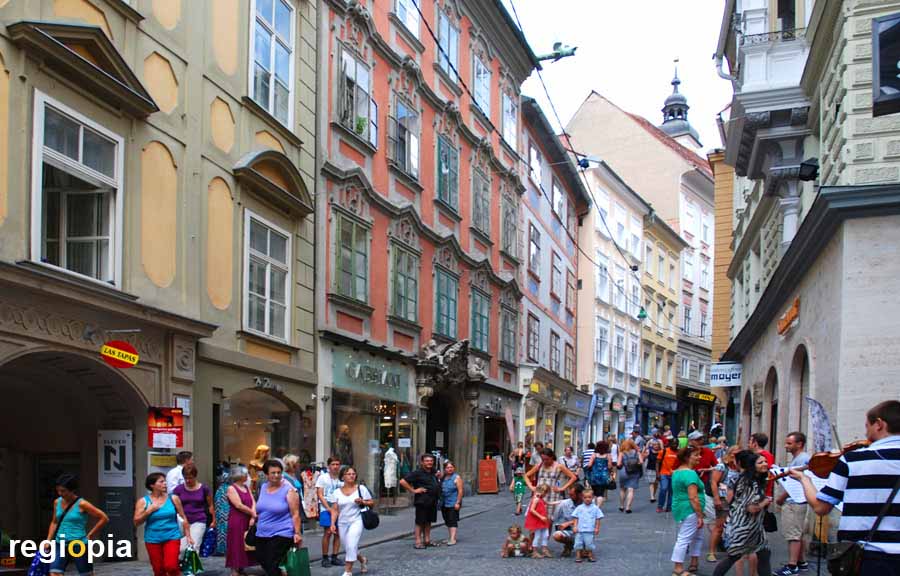
Sporgasse
The most beautiful street of the city is also the oldest. Long before the founding of the city, a Roman trade route ran to Hungary, the "Strata Hungarica". The name "Sporgasse" originates from smiths who made spurs and weapons in shops along the street.
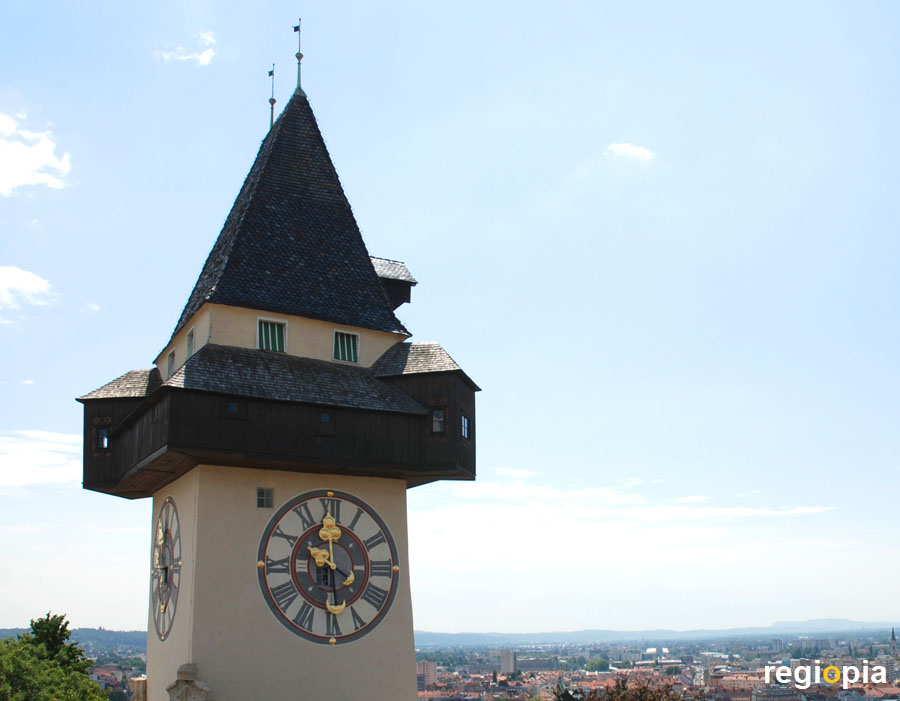
Clock Tower
The clock tower "Uhrturm" on the Schlossberg is the most visible landmark of Graz. It was part of the fortress built in the 13th century. The tower in its present shape was built around 1560. After the "Treaty of Schönbrunn" in 1809, the fortress had to be demolished, only the clock tower remained.
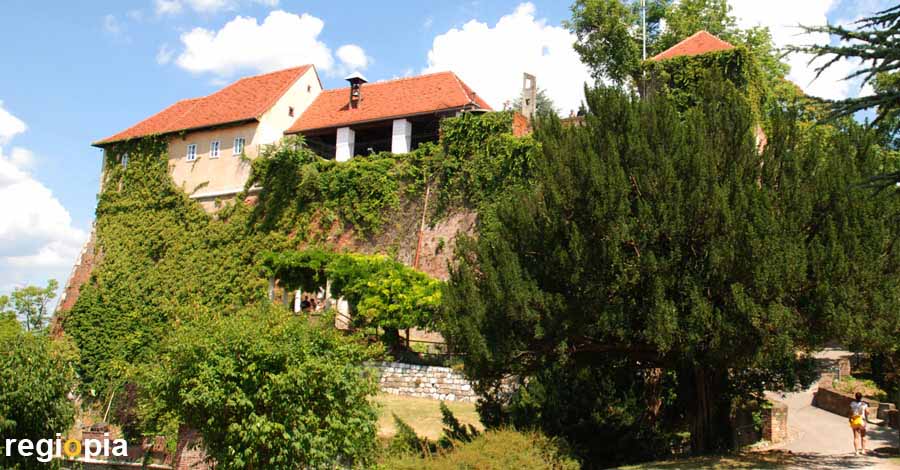
Schlossberg
The 125 m rock over the river Mur was firts settled by Slavs in the 8th century BC. In 1544 the "Schlossberg" (castle hill) was extended to an impregnable fortress. Since the dismantling of the walls, there is a park with a beautiful view over the city of Graz.
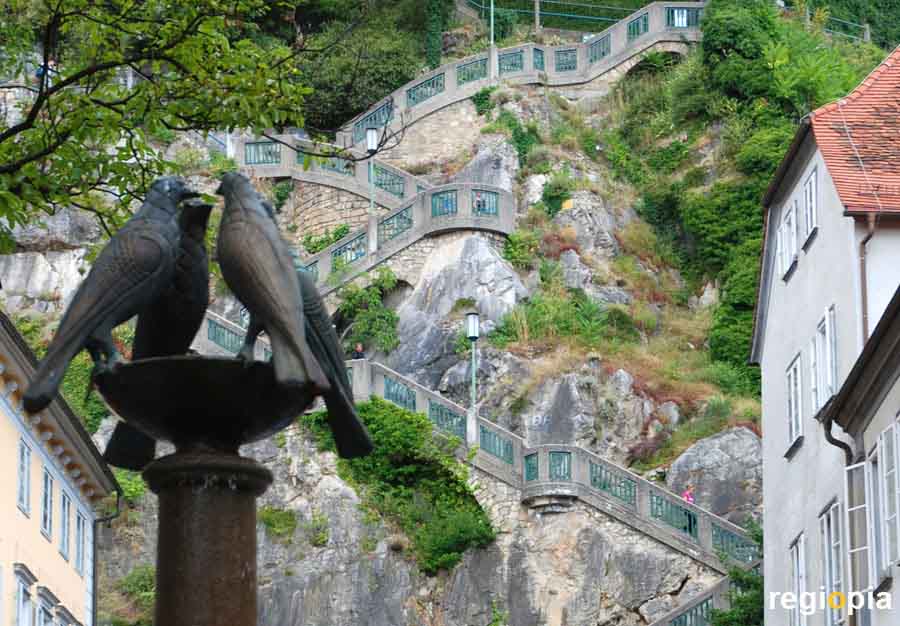
Schlossbergsteig
The Schlossberg is reached via the Schlossbergsteig, a zigzag staircase at the steepest point of the mountain. But you can also use the Schlossbergbahn (cable car) or the Schlossberglift (elevator) if you do not feel like climbing steep stairs. A gentler climb offers the footpath from Karmeliterplatz.
www.holding-graz.at/freizeit/schlossberg
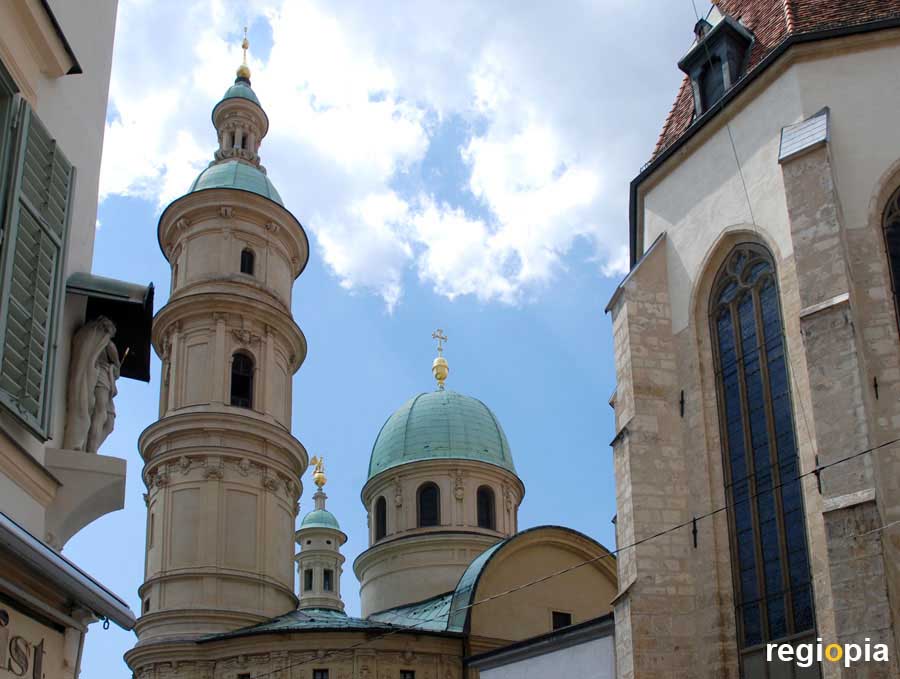
Graz Cathedral
The construction of Graz Cathedral started 1438. In 1464 the church of St. Aegydius was completed. The facade is of the cathedral is rather plain, inside there is a nice Baroque altar. Next to the cathedral stands the beautiful "Katharinenkirche" St. Catherine's Church.
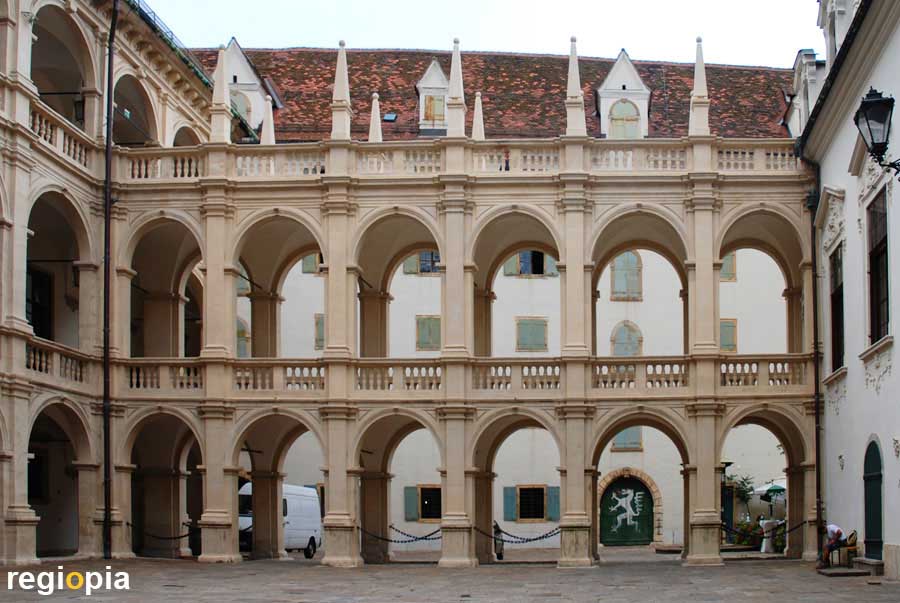
Landhaus Graz
The Italian fortress architect Domenico dell'Allio built the Grazer Landhaus in 1531 as the first Renaissance building in the city. Particularly interesting are the courtyards with beautiful arcades.
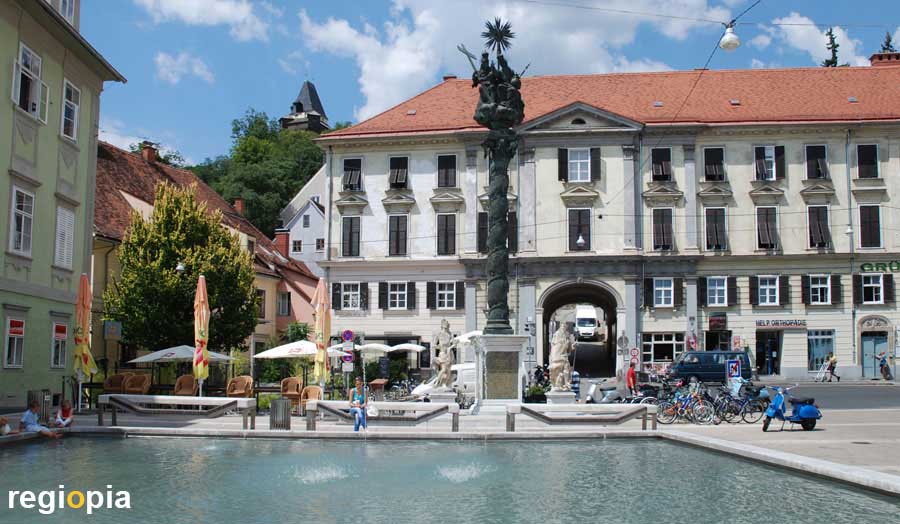
Karmeliterplatz
The Carmelite Square owes its name to the former Carmelite monastery that was located here. Today the "Styrian People's Party" resides here in the "Palaisgaller". From the square, you access the "Schlossberg" via an arch way.
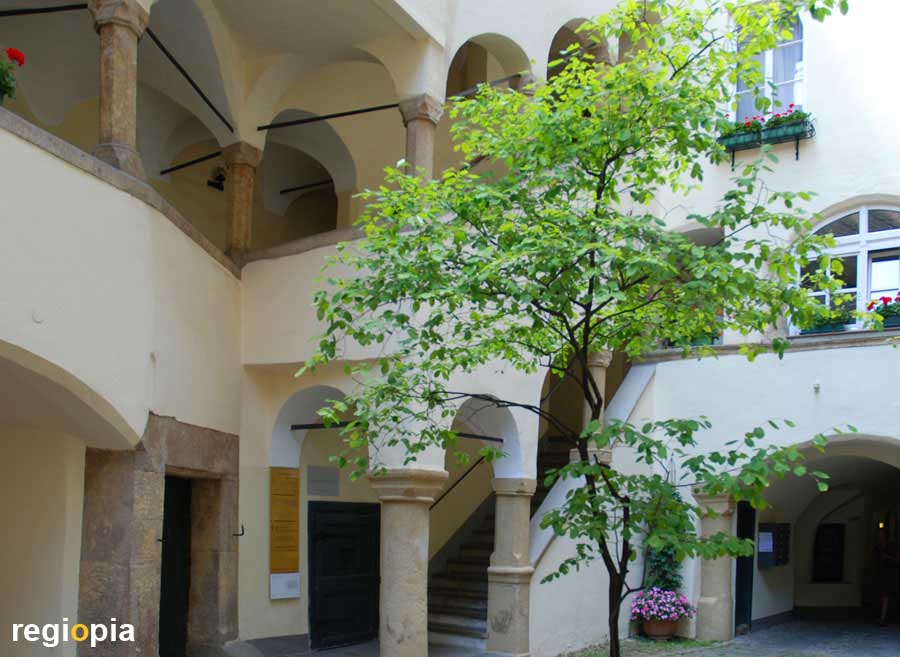
Ordenshaus der Deutschen Ritter
The German Order of Knights originated at the time of the Crusades in Jerusalem and became known for its colonization of the Baltic Sea coastline of todays Poland and Lithuania. The Deutschherren Order acquired the building with the beautiful courtyard in 1689. The architectural style is late Gothic, in parts already renaissance.
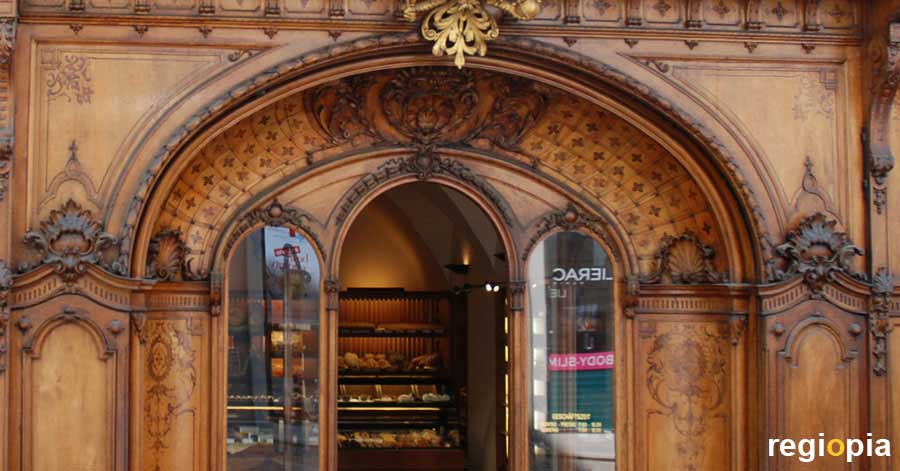
Hofbäckerei Edegger-Tax
The city's oldest bakery was awarded the title "Imperial and Royal Court Bakery" in 1888. The impressive oak portal with the double-headed eagle, is still preserved from the time of the Austrian-Hungarian Empire. Don't miss to taste the delicacies inside the bakery.
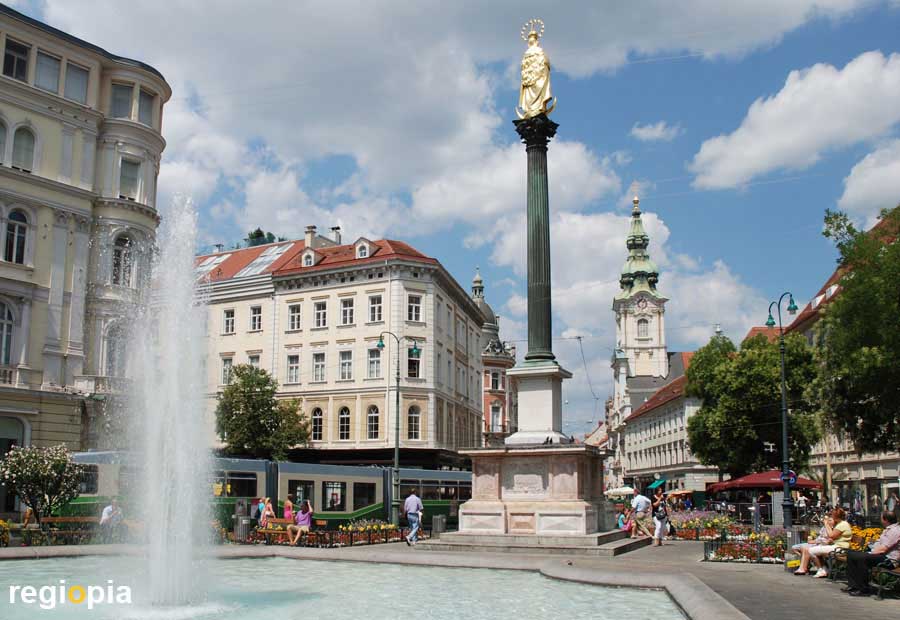
Mariensäule
The Marian column was erected in 1670 as a votive pillar after the battle against the Turks at Mogersdorf. After the battle, a peace treaty was negotiated with the Turks, which amounted to a victory, because the Turks were numerically superior.
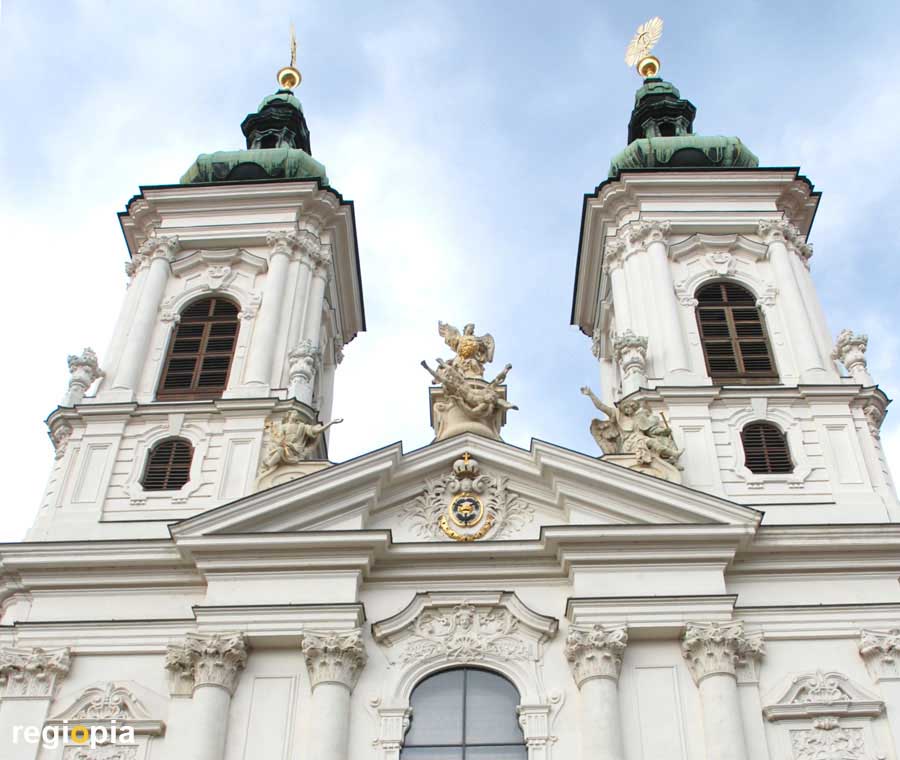
Mariahilferkirche
Around 1611 a baroque church was built following the example of Venice. In 1744 the church was completed with two towers by Josef Hueber. The church is connected to the Minorite monastery to the south and forms the northern end of the cloister. The monastery is still inhabited by monks and is a lively venue for art and music.
Touristmap Graz
ads
Travel Guide Graz
Graz tourist information
Graz is the second biggest city in Austria with over 280,000 inhabitants. The provincial capital of Styria was "European Capital of Culture" in 2003. During this time, some spectacular buildings were created, such as the "Kunsthaus" and the Murinsel. Graz is located on the southern edge of the Alps and is more influenced by the Mediterranean climate than the rainy Central Europe. The city is located in a basin that is open to the south. In winter, this often keeps a layer of smog over the city. The weather in Graz offers many hours of sunshine and a mild climate.
ads
ads



